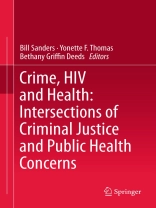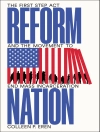Carefully selected to reflect the latest research at the interface between public health and criminal justice in the US, these contributions each focus on an aspect of the relationship. How, for example, might a person’s criminal activity adversely affect their health or their risk of exposure to HIV infection? The issues addressed in this volume are at the heart of policy in both public health and criminal justice. The authors track a four-fold connection between the two fields, exploring the mental and physical health of incarcerated populations; the health consequences of crime, substance abuse, violence and risky sexual behaviors; the extent to which high crime rates are linked to poor health outcomes in the same neighborhood; and the results of public health interventions among traditional criminal justice populations.
As well as exploring these urgent issues, this anthology features a wealth of remarkable interdisciplinary contributions that see public health researchers focusing on crime, while criminologists attend to public health issues. The papers provide empirical data tracking, for example, the repercussions on public health of a fear of crime among residents of high-crime neighborhoods, and the correlations between HIV status and outcomes, and an individual’s history of criminal activity. Providing social scientists and policy makers with vital pointers on how the criminal justice and public health sectors might work together on the problems common to both, this collection breaks new ground by combining the varying perspectives of a number of key disciplines.
İçerik tablosu
1) Linda Teplin & co.: Northwestern: Incarcerated juveniles, mental health and co-morbidity.-2) Dan O’Connell, Jim Inciardi & co.: University of Maryland: HIV status, related outcomes, and criminal justice history.-3) Carolina Guzman & Barry Krisberg: National Council on Crime and Delinquency: Findings from the Health Returns Initiative – Physical and mental health of juvenile during and after incarceration.- B) Health consequences of risk behaviors .-4) Bill Sanders, Geoffrey Hunt, & Avelardo Valdez & co.: Cal. State LA, Institute for Scientific Analysis, University of Texas, San Antonio: Gang youth, risk behaviors and negative health outcomes.-5) Patricia Case, M. Gallardo-Cruz, Robin A. Pollini, I. Artamonova, A. Vera, Stephanie A. Strathdee. UC Sand Diego, Pandillas y Salud: Correlates of Gang Membership among Injection Drug Users (IDUs) in Tijuana, Mexico. [Note: Pandillas y salud = gangs & health].-6) Debbie Baskin, Ira Sommers, & Arielle Baskin-Sommers: Cal. State LA; University of Wisconsin, Madison: Health consequences of crystal methamphetamine and other drug use.- C) Public health interventions with high risk populations .-7) Leslie Clark & co. Division of Adolescent Medicine, Children’s Hospital Los Angeles: Project AIM (Adult Identity Monitoring): An appraisal of Project Aim’s preliminary results with high risk youth.-8) Tanya Nieri, J.L. Matjasko, K. Williams and N. Guerra: Center for Disease Control, Academic Center for Excellence, University of California, Riverside: Youth violence prevention: Public health intervention and high risk populations.- D) Crime, Space and Health .-9) Paul Grunewald & co.: Pacific Institute for Research and Evaluation: A spatial analysis of drug markets and violence over time.-10) Christopher R. Browning & Kathleen A. Cagney; The Ohio State University, University of Chicago. The Socio spatial Context of Cardiovascular Risk: Neighborhood Crime, Social Cohesion, and Blood Pressure.












